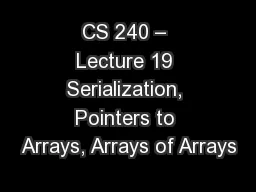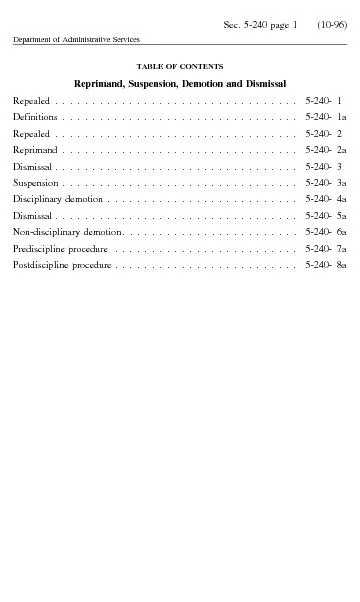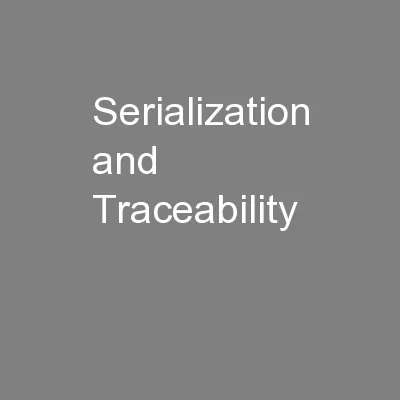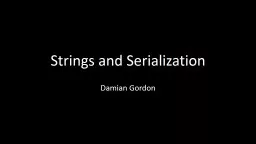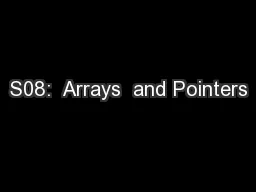PPT-CS 240 – Lecture 19 Serialization, Pointers to Arrays, Arrays of Arrays
Author : jane-oiler | Published Date : 2018-09-17
Floating Point Numbers Serialization Serialization is the concept of turning any data structure or objects into a stream of bytes In C we lack proper objects so
Presentation Embed Code
Download Presentation
Download Presentation The PPT/PDF document "CS 240 – Lecture 19 Serialization, Poi..." is the property of its rightful owner. Permission is granted to download and print the materials on this website for personal, non-commercial use only, and to display it on your personal computer provided you do not modify the materials and that you retain all copyright notices contained in the materials. By downloading content from our website, you accept the terms of this agreement.
CS 240 – Lecture 19 Serialization, Pointers to Arrays, Arrays of Arrays: Transcript
Download Rules Of Document
"CS 240 – Lecture 19 Serialization, Pointers to Arrays, Arrays of Arrays"The content belongs to its owner. You may download and print it for personal use, without modification, and keep all copyright notices. By downloading, you agree to these terms.
Related Documents

